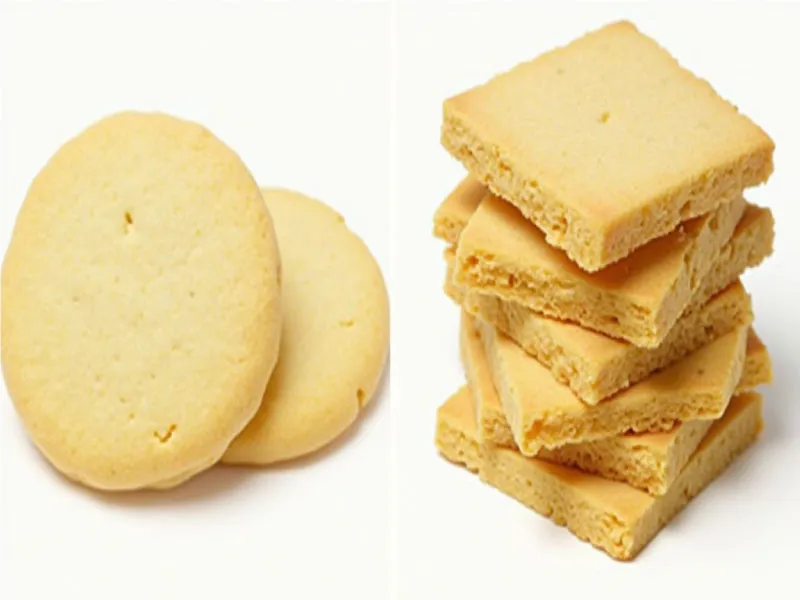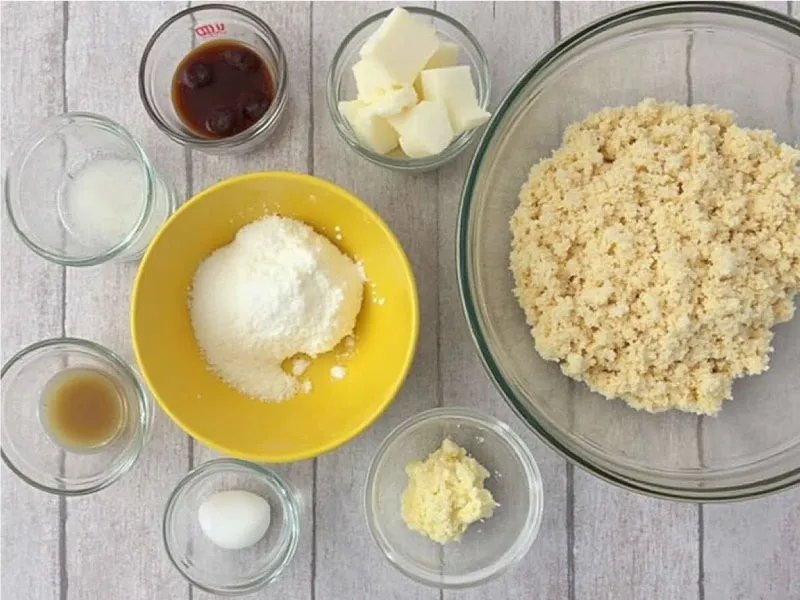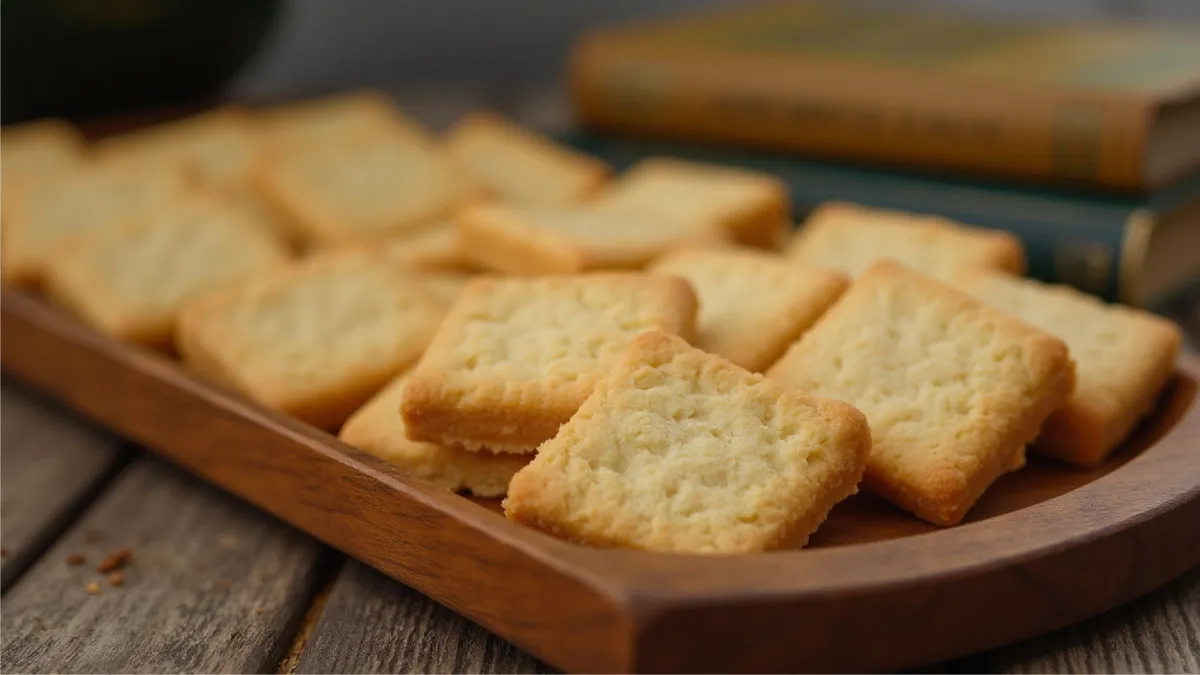Are Lorna Doone Cookies Shortbread?
Lorna Doone cookies have been around for over a century, and yet they continue to spark debates among cookie lovers and baking enthusiasts alike. Are Lorna Doone cookies shortbread? That’s the big question. On one hand, some argue that their buttery texture fits the bill, while on the other hand, others point out key differences that set them apart. In this article, we’ll not only uncover the fascinating origins of these cookies but also examine their ingredients in detail and explore how they stack up against traditional shortbread.
Table of Contents
Introduction
The History Behind Lorna Doone Cookies
Lorna Doone cookies have a rich history that dates back to 1912. They were first introduced by the F. A. Kennedy Steam Bakery, the same company behind the creation of the Fig Newton. However, the original recipe didn’t come from a big corporation—it originated from a small bakery in Chicago. Emily Malloy, an Irish immigrant, crafted the recipe alongside her husband, John Malloy. Eventually, when their bakery closed, they sold the recipe, leading to its commercial production.
Interestingly enough, the cookies became an instant hit and have remained a favorite ever since. Over the years, their popularity grew, and today they are owned by Mondelez International. Despite the shift in ownership, the recipe has managed to keep its nostalgic charm, continuing to win over fans of all ages.
Naming Mystery
Why are they called “Lorna Doone”? The name is thought to be inspired by R. D. Blackmore’s 1869 novel of the same name. The book tells the story of a young woman named Lorna Doone, and its romantic appeal might have influenced the naming. However, there’s no hard evidence to confirm this theory. Because of this, it remains one of the brand’s enduring mysteries, adding a layer of intrigue to its history.
What we do know is that the name stuck and helped the cookies gain recognition. Moreover, the distinct title, paired with their unique square shape, set Lorna Doone apart from other cookies of the time. This combination of uniqueness and familiarity likely played a role in their long-lasting success.
A Timeless Treat
Despite their long history, Lorna Doone cookies continue to hold a special place in the hearts of many. Their golden, square shape and slightly crumbly texture make them instantly recognizable. In addition to their distinct appearance, they’re simple, classic, and versatile—qualities that have undoubtedly helped them withstand the test of time.
With such a storied past, it’s no wonder these cookies have sparked so much discussion. However, before we decide whether they truly qualify as shortbread, let’s dig deeper into what makes shortbread so special.
What Defines a Shortbread Cookie?
Traditional Shortbread Ingredients
Shortbread cookies have been around for centuries and are often associated with Scotland. The secret to their distinct taste lies in their simplicity. Traditional shortbread typically contains just three main ingredients: butter, sugar, and flour. These ingredients are carefully balanced to create a rich, crumbly texture that melts in your mouth.
Butter is the star of the show in shortbread. Its high-fat content gives the cookies their signature flavor. Sugar adds sweetness without overpowering, and flour holds everything together while keeping the texture light. This simple formula creates the golden, buttery treat we all know and love.
There are no eggs, leavening agents, or artificial additives in traditional shortbread. This purity is what sets it apart from many other cookies. It’s all about keeping things simple while highlighting the natural flavors.
How Lorna Doone Cookies Compare
Are Lorna Doone cookies shortbread? To answer this, we first need to compare their ingredients to those in traditional shortbread. While Lorna Doone cookies share some notable similarities, there are also key differences that set them apart. For instance, they contain enriched wheat flour, vegetable oils, and preservatives—ingredients that are absent in classic shortbread. Although these additions help the cookies last longer on store shelves, they also change their texture and taste in significant ways.
In contrast to traditional shortbread, Lorna Doone cookies are less crumbly. Instead, they feel denser and slightly sweeter, which often appeals to many modern palates. Even though they may resemble shortbread in appearance, purists might argue that their recipe and ingredient composition make them something else entirely.

Expert Opinions on Lorna Doone as Shortbread
Opinions, as you might expect, vary on whether Lorna Doone cookies can truly be classified as shortbread. On one hand, some experts emphasize that the cookies meet the basic criteria: they are buttery, sweet, and flour-based. Furthermore, their square shape and golden color are reminiscent of traditional shortbread.
On the other hand, others argue that the use of vegetable oils, preservatives, and enriched flour disqualifies them from being labeled as true shortbread. From this perspective, these additional ingredients make the cookies more of a modern adaptation than a true representation of the original.
Nevertheless, fans of the cookies rarely concern themselves with this debate. For many, the nostalgic taste of Lorna Doone is what matters most. Whether they qualify as shortbread or not, their widespread appeal remains undeniable.
By now, it’s clear that while Lorna Doone cookies share some traits with traditional shortbread, they also stand apart in significant ways. To dive even deeper into this ongoing debate, let’s take a closer look at their ingredients and how they influence the final product.
Ingredient Analysis of Lorna Doone Cookie
Breakdown of Ingredients
To fully understand Are Lorna Doone cookies shortbread?, let’s break down their ingredients and compare them to those in traditional shortbread. Below is a side-by-side comparison in table format:
| Ingredient | Lorna Doone | Traditional Shortbread |
|---|---|---|
| Butter | Present, but less pronounced | Rich in butter |
| Sugar | Refined sugar | Granulated or caster sugar |
| Flour | Enriched wheat flour | Plain flour |
| Vegetable Oils | Yes | No |
| Preservatives | Yes | No |

One of the most notable differences is the use of vegetable oils and preservatives in Lorna Doone cookies. These ingredients extend shelf life and lower production costs, but they also affect the cookies’ texture and flavor. Traditional shortbread relies on butter alone to create a smooth, melt-in-your-mouth consistency.
Nutritional Differences
Another important aspect to consider is nutrition. Lorna Doone cookies are slightly higher in sugar and calories compared to traditional shortbread. They also contain trans fats due to the use of hydrogenated oils, which are not present in classic recipes.
These differences make Lorna Doone cookies more convenient for modern consumers but less authentic when compared to their traditional counterparts. While they’re still delicious, they may not deliver the same richness as shortbread made from scratch.
The Role of Additives
Additives like preservatives and flavor enhancers give Lorna Doone cookies a consistent taste and longer shelf life. This consistency is part of why they’ve remained so popular over the years. However, for those who prefer natural or homemade treats, these additives might be a drawback.
Lorna Doone cookies strike a balance between tradition and modern convenience. They offer a familiar flavor that appeals to many, even if they don’t meet the strict definition of shortbread.
Popularity and Cultural Impact
How Lorna Doone Became an American Favorite
Lorna Doone cookies have a timeless appeal that has made them a household name in America. Since their introduction in 1912, they’ve become a go-to treat for those who love simple, buttery flavors. But what really helped Lorna Doone rise to fame was its marketing. In 1939, Nabisco partnered with Disney to feature the cookies in Mickey’s Surprise Party, an animated short film. This clever move not only boosted sales but also cemented Lorna Doone’s place in popular culture.
The cookies’ square shape and distinct packaging have also contributed to their iconic status. Unlike traditional round cookies, Lorna Doone’s geometric design made them stand out on store shelves. This uniqueness, combined with a taste that evokes nostalgia, keeps them relevant even in a market flooded with new snack options.
Global Influence of Lorna Doone Cookies
While Lorna Doone cookies are most popular in the United States, their Irish roots give them a global connection. The original recipe, created by the Malloys in Chicago, was inspired by the rich baking traditions of Ireland. This link to Irish culture makes them a favorite for those who enjoy European-style treats.
Additionally, Lorna Doone cookies have found a place in international markets, particularly where American snacks are sold. Their long shelf life and consistent quality make them an easy choice for export, allowing people around the world to enjoy a taste of this American classic.
Are Lorna Doone cookies shortbread? While the debate continues, their global popularity shows that people value them regardless of the label. Whether served with tea, used as a base for desserts, or eaten straight from the box, Lorna Doone cookies are undeniably beloved.
FAQs About Lorna Doone Cookies
Are Lorna Doone Cookies Really Shortbread?
The question Are Lorna Doone cookies shortbread? is often asked by curious snackers. Technically, Lorna Doone cookies share some qualities with traditional shortbread. They’re buttery, lightly sweetened, and have a crumbly texture. However, their use of vegetable oils and preservatives sets them apart from the classic recipe.
While some may argue that these additions disqualify Lorna Doone cookies from being called shortbread, others believe they’re simply a modern twist on a traditional favorite. In the end, it comes down to personal preference and how strictly you define shortbread.
Who Owns the Lorna Doone Brand?
The Lorna Doone brand is currently owned by Mondelez International, one of the largest snack companies in the world. Originally, they were produced by the F. A. Kennedy Steam Bakery, which was later acquired by Nabisco. When Mondelez International took over Nabisco’s operations, they inherited the Lorna Doone legacy.
This change in ownership hasn’t affected the recipe too much, though modern production techniques have introduced additives to improve shelf life and consistency.
What Is the Shelf Life of Lorna Doone Cookies?
Lorna Doone cookies are known for their long shelf life, thanks to their packaging and use of preservatives. When stored properly in a cool, dry place, an unopened package can last for several months. However, once opened, it’s best to consume them within a few weeks to maintain their fresh taste.
For a recipe that showcases a similar shortbread-like texture, you might enjoy the Cherry Almond Shortbread Cookies recipe. This delightful treat offers a homemade twist with rich flavors that rival even the best packaged cookies.
Final Thoughts
Verdict on the Shortbread Debate
So, are Lorna Doone cookies shortbread? The answer isn’t straightforward. While these cookies share some traits with traditional shortbread—like their buttery flavor and crumbly texture—they also deviate in key ways. Ingredients such as vegetable oils and preservatives move them away from the simplicity of classic shortbread recipes.
That said, this debate doesn’t take away from their charm. Lorna Doone cookies have carved out their own identity over the years. They are loved not just for their taste but also for the nostalgia they bring. For many, these cookies are less about fitting into a category and more about evoking memories of comfort and tradition.
Why Lorna Doone Cookies Remain Special
Whether they’re officially shortbread or not, Lorna Doone cookies hold a unique place in the world of snacks. Their long history, dating back to 1912, speaks volumes about their enduring appeal. They’ve remained relevant through clever marketing, cultural references, and, most importantly, their unmistakable flavor.
At the end of the day, what makes Lorna Doone cookies special is their ability to bring people together. From a simple afternoon snack to a key ingredient in homemade desserts, they continue to delight cookie lovers of all ages.
For those seeking a taste of history with a modern twist, Lorna Doone cookies are the perfect choice. While the question Are Lorna Doone cookies shortbread? might never have a definitive answer, one thing is clear—they’re a timeless treat that continues to satisfy.
